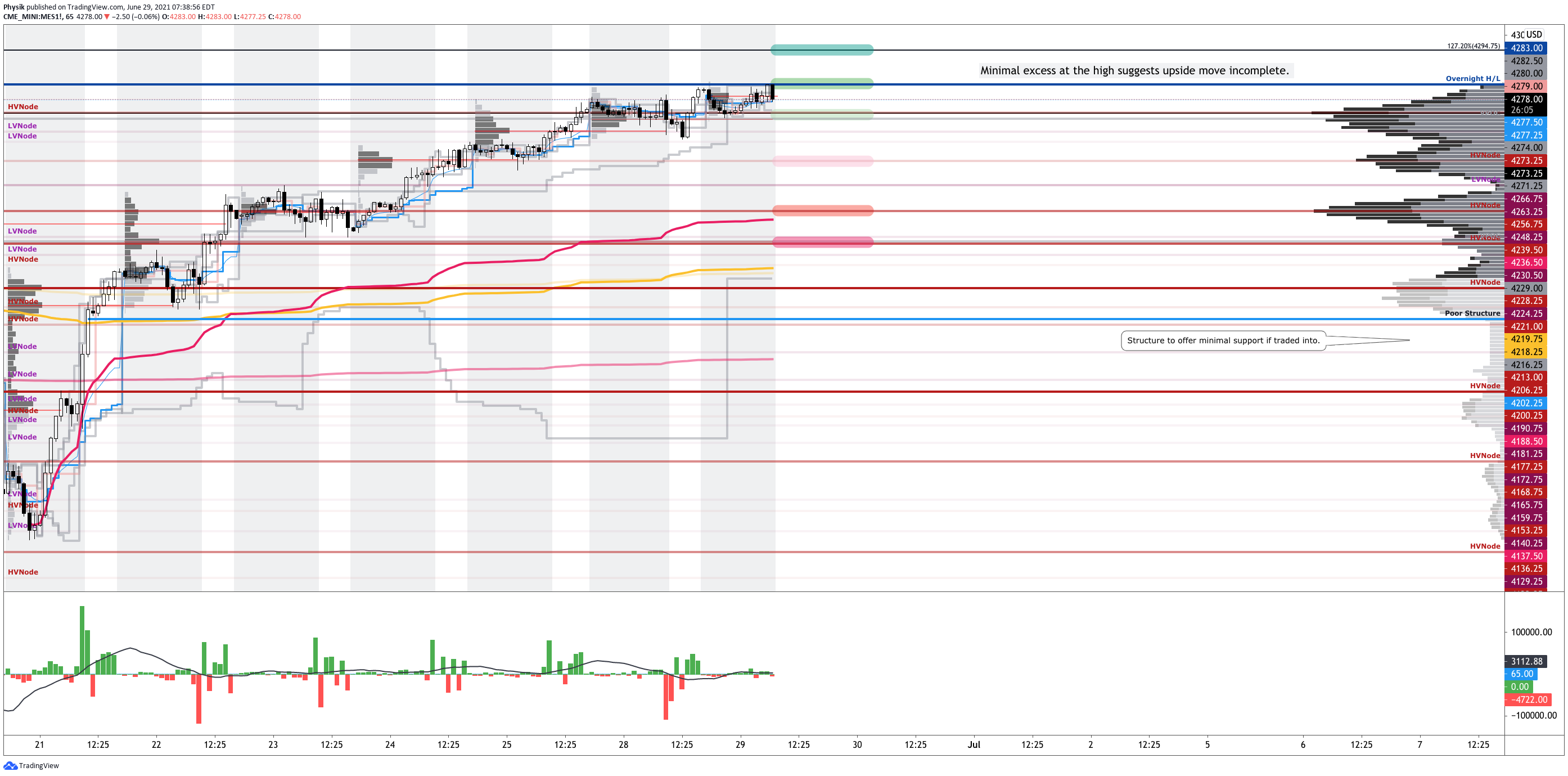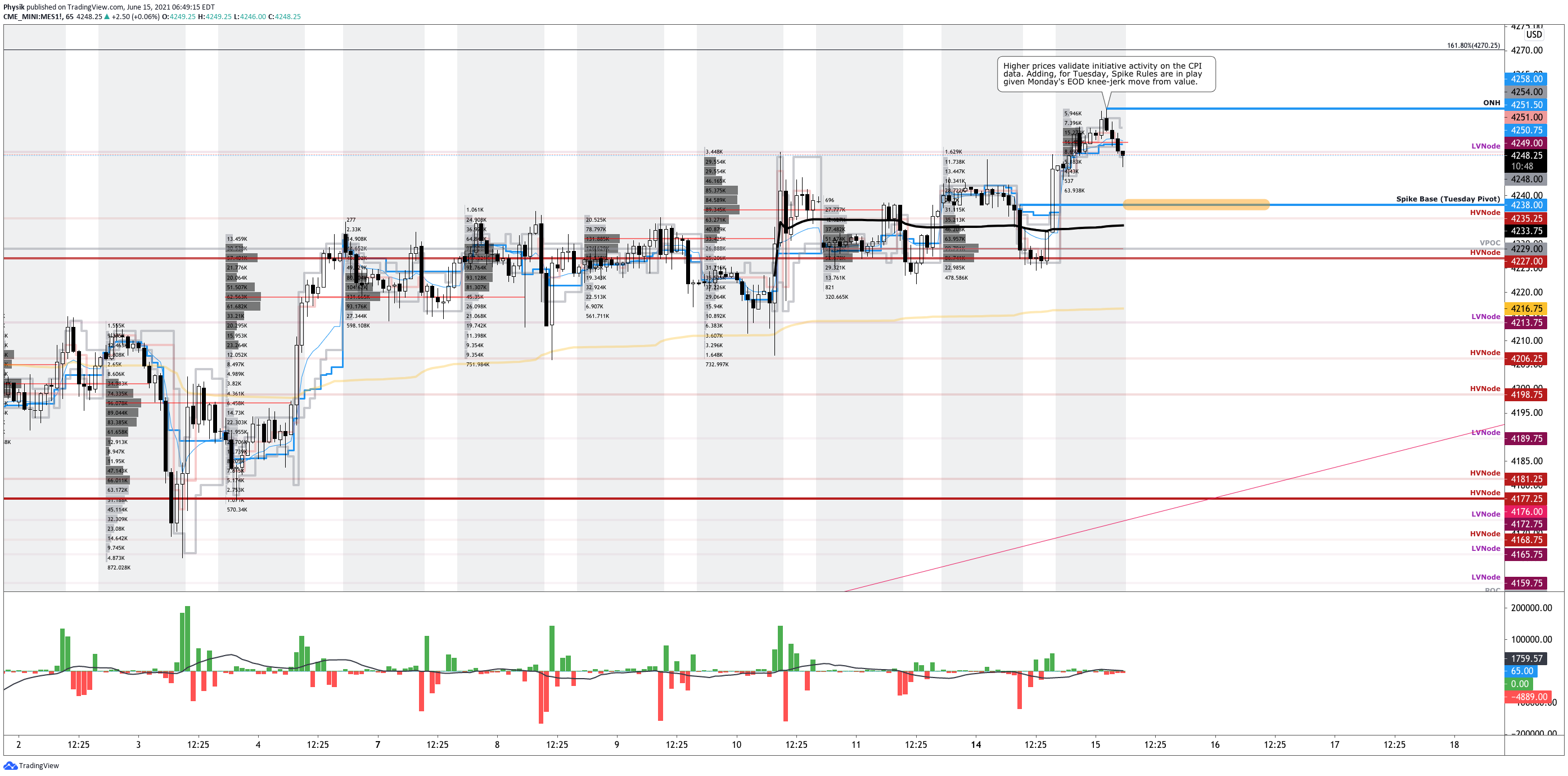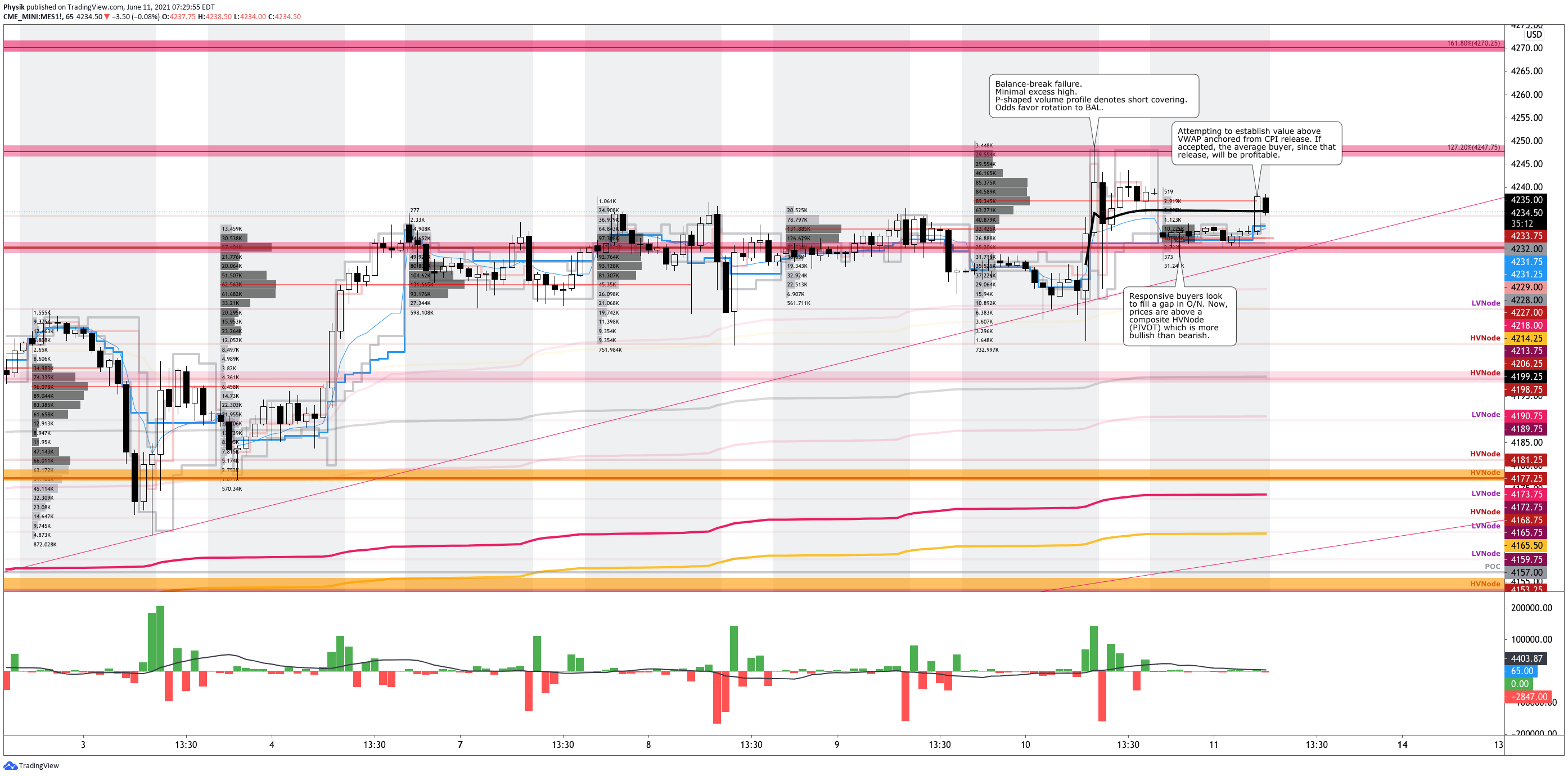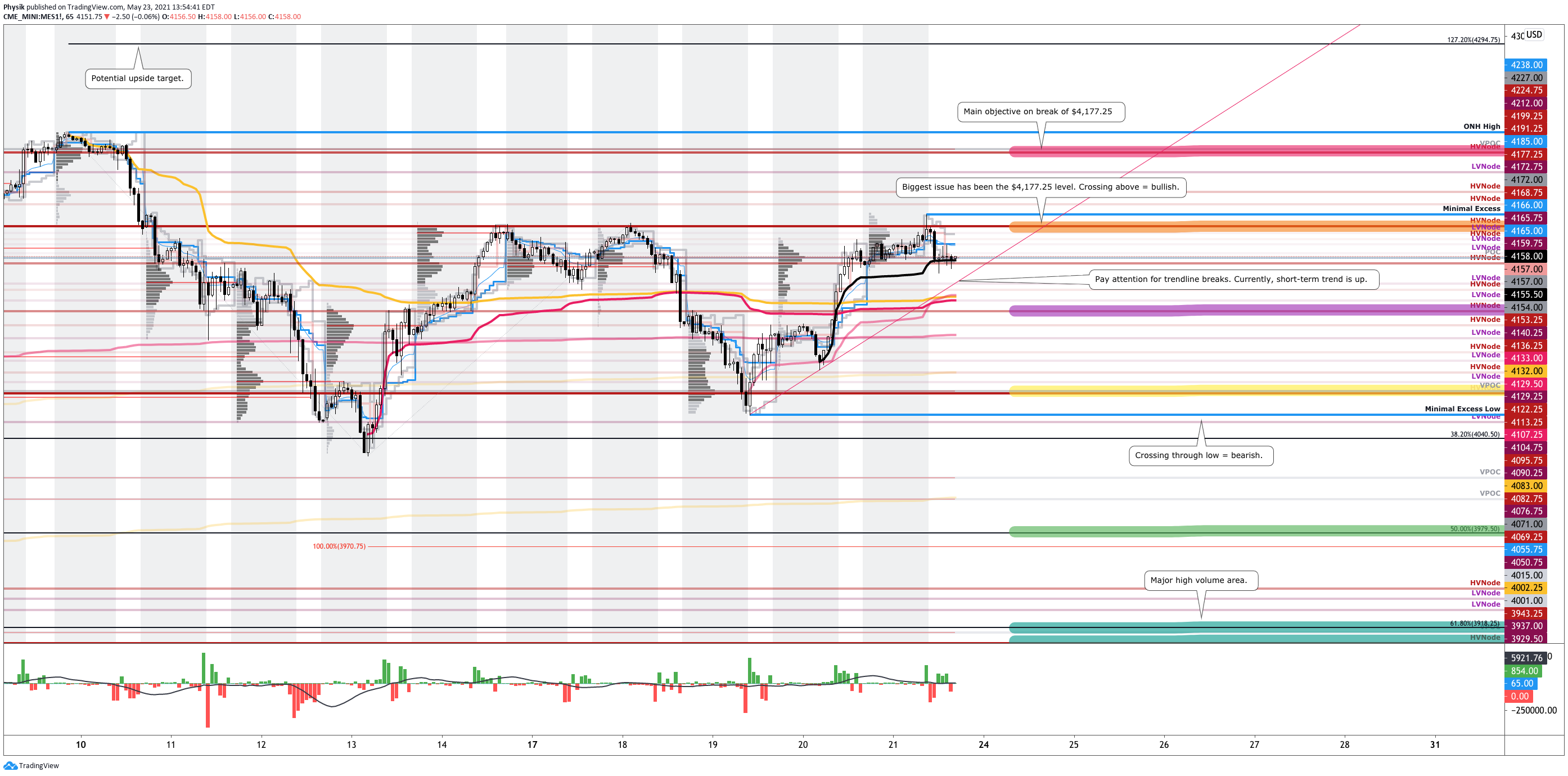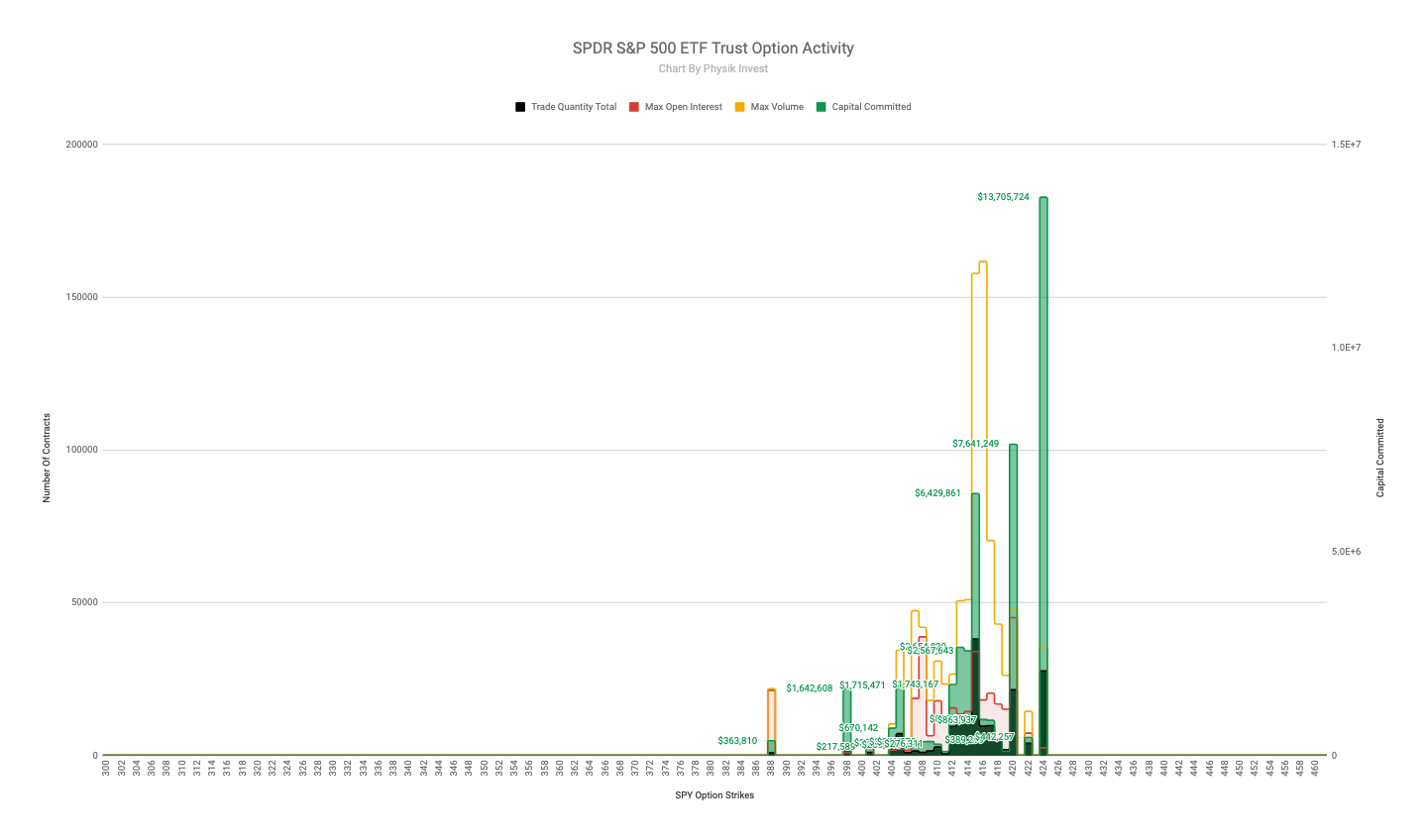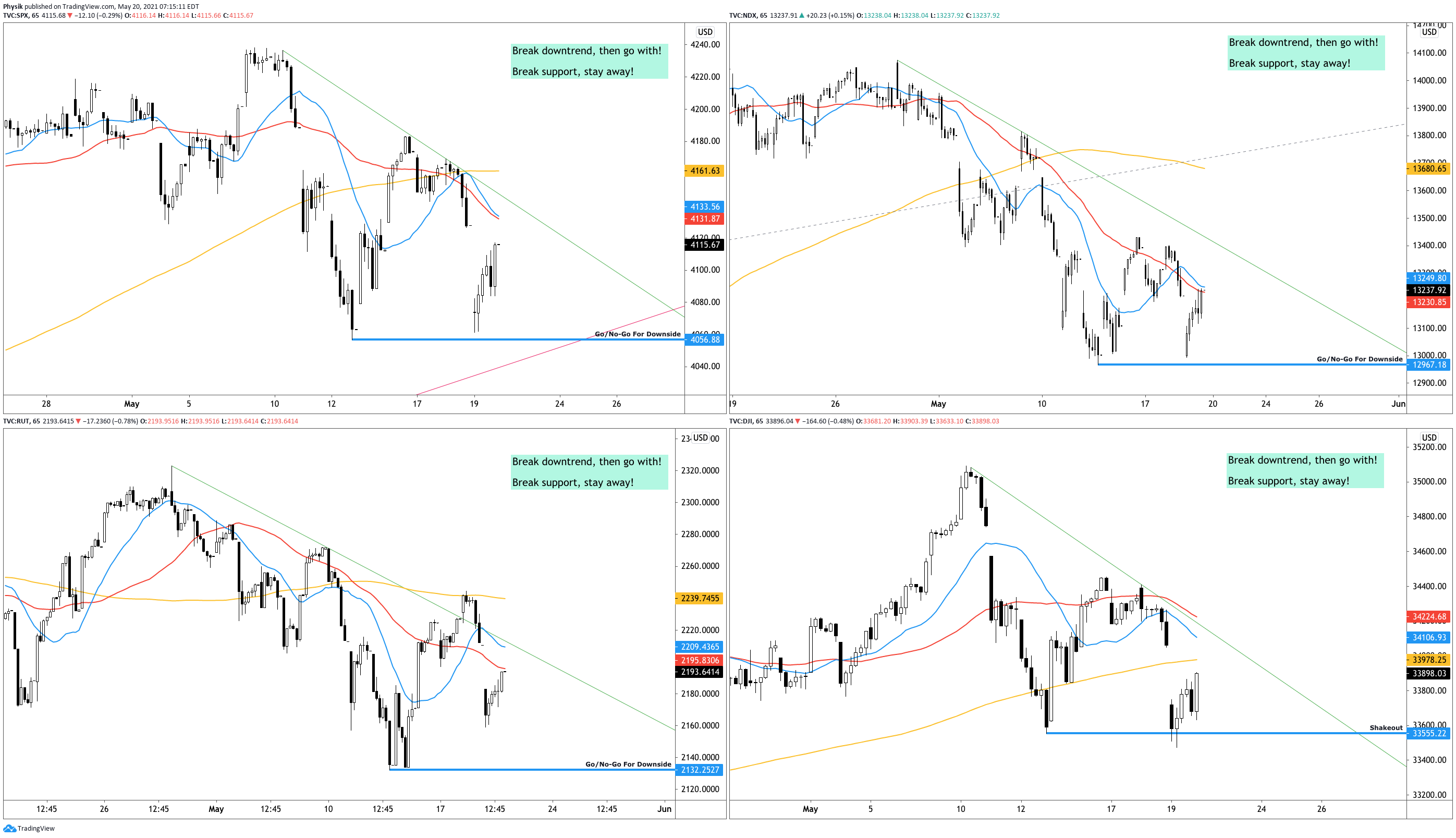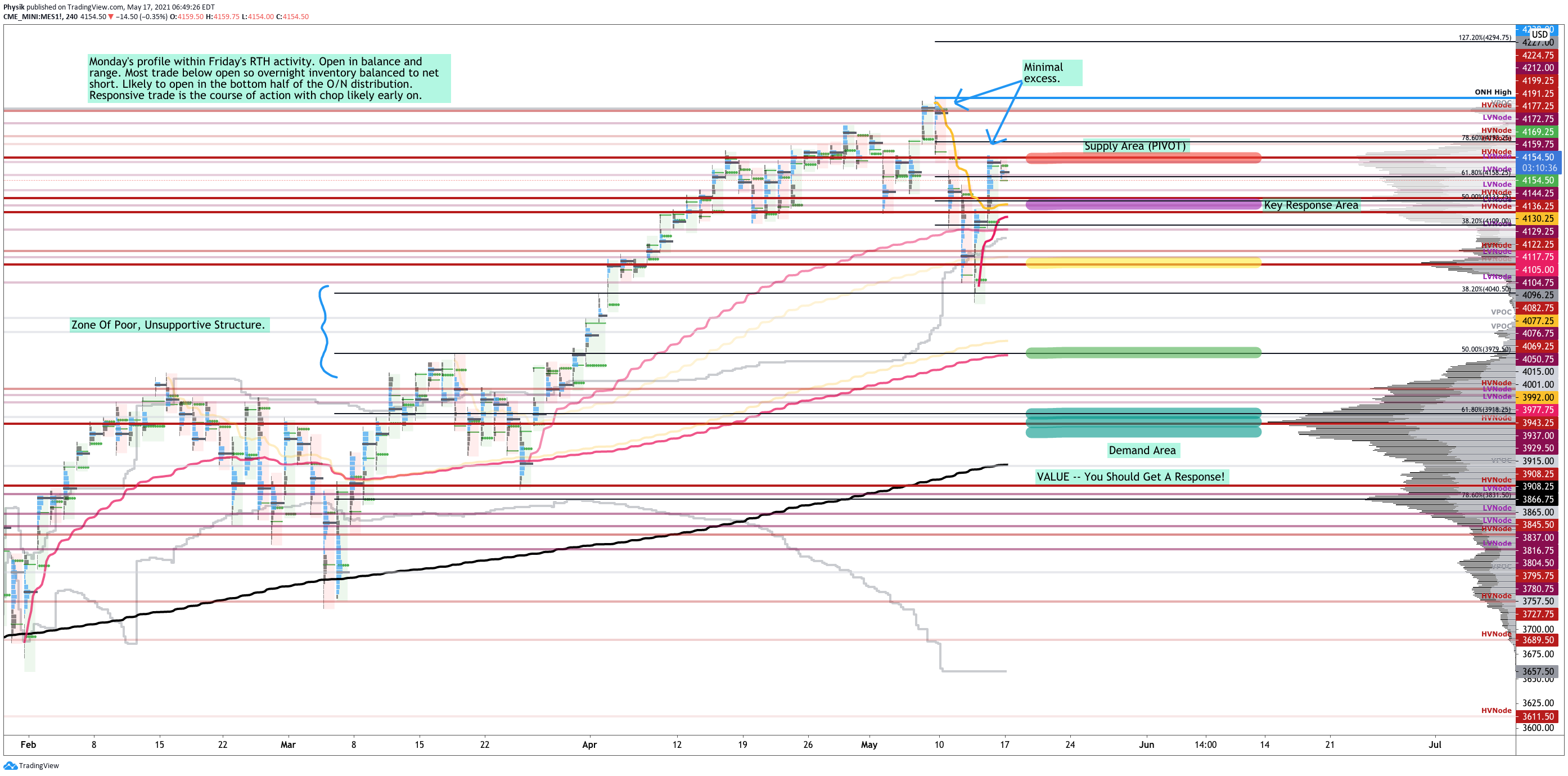Market Commentary
U.S. equity index futures diverge overnight.
- Ahead: Inflation, earnings, Fed speak.
- SPX, RUT, DJI lower. NDX firming up.
What Happened: U.S. stock index futures traded in different directions.
The S&P 500, Russell 2000, and Dow Jones Industrial Average traded relatively weak, in comparison to the technology and growth-focused Nasdaq 100.
This rotation is likely attributable to technical factors – issuance, short coverings, a fading reflation trade, and peak growth pushing lower Treasury yields – as well as the upcoming monthly options expiration and pre-earnings positioning.
Ahead is data on inflation and earnings with some Fed speak around noon Eastern time.
What To Expect: Tuesday’s regular session (9:30 AM – 4:00 PM EST) in the S&P 500 will likely open inside of prior-range and -value, suggesting a limited potential for immediate directional opportunity.
Adding, during the prior day’s regular trade, the best case outcome occurred, evidenced by initiative trade up to the $4,373.00 Fibonacci-derived price target.
This price exploration comes amidst a divergence. As noted, the Nasdaq 100 is trading relatively strong in comparison to the S&P, Russell, and Dow. The holding pattern is not only attributable to positioning ahead of the monthly options expiration (OPEX), but second-quarter earnings, inflation expectations, and the like.
Options Expiration (OPEX): Option expiries mark an end to pinning (i.e, the theory that market makers and institutions short options move stocks to the point where the greatest dollar value of contracts will expire worthless) and the reduction dealer gamma exposure.
“The broad markets are settling back and awaiting U.S. inflation,” said Sebastien Galy, a senior macro strategist at Nordea Investment Funds SA. “We view the environment as one of gestation as earnings come in, before the risk-taking trend starts again, though a higher U.S. inflation print could create a temporary setback.”
That said, the dip in the 10-year Treasury yield is not all too concerning.
Obviously, that’s just one data point. Another consideration is the unwind of certain stimulus measures, like quantitative easing (QE) which shifts the returns distribution right.
Knowing the above, for today, participants can trade from the following frameworks.
In the best case, the S&P 500 trades sideways or higher; activity above the $4,365.75 low volume area (LVNode) pivot puts in play the $4,378.75 minimal excess overnight high (ONH). Thereafter, if higher, the $4,398.50 and $4,417.50 Fibonacci price extensions come into play.
In the worst case, the S&P 500 trades lower; activity below $4,365.75 puts in play the $4,343.25 high volume area (HVNode). Initiative trade beyond the HVNode could reach as low as the $4,314.75 HVNode and $4,291.00 untested Point of Control (POC).
Volume Areas: A structurally sound market will build on past areas of high volume. Should the market trend for long periods of time, it will lack sound structure (identified as a low volume area which denotes directional conviction and ought to offer support on any test). If participants were to auction and find acceptance into areas of prior low volume, then future discovery ought to be volatile and quick as participants look to areas of high volume for favorable entry or exit. Excess: A proper end to price discovery; the market travels too far while advertising prices. Responsive, other-timeframe (OTF) participants aggressively enter the market, leaving tails or gaps which denote unfair prices. Overnight Rally Highs (Lows): Typically, there is a low historical probability associated with overnight rally-highs (lows) ending the upside (downside) discovery process. POCs: POCs are valuable as they denote areas where two-sided trade was most prevalent. Participants will respond to future tests of value as they offer favorable entry and exit.

News And Analysis
Economy | Yellen sees U.S. companies pushing back global tax deal. (BBG)
Energy | OPEC+ impasse risks price war as demand keeps surging. (REU)
Politics | Biden team mulls digital trade deal to counter China in Asia. (BBG)
Politics | Biden to warn companies of risks of operating in Hong Kong. (FT)
Markets | Boeing cutting 787 production on new structural problems. (REU)
Markets | Goldman dealmakers’ bumper quarter counters trade slump. (BBG)
Markets | JPM fell amid climbing expenses, loan growth expectations. (BBG)
Economy | PBOC said monetary policy unchanged despite RRR cut. (BBG)
FinTech | FTX deal provides institutions new access to crypto market. (BBG)
What People Are Saying
About
Renato founded Physik Invest after going through years of self-education, strategy development, and trial-and-error. His work reporting in the finance and technology space, interviewing leaders such as John Chambers, founder, and CEO, JC2 Ventures, Kevin O’Leary, businessman and Shark Tank host, Catherine Wood, CEO and CIO, ARK Invest, among others, afforded him the perspective and know-how very few come by.
Having worked in engineering and majored in economics, Renato is very detailed and analytical. His approach to the markets isn’t built on hope or guessing. Instead, he leverages the unique dynamics of time and volatility to efficiently act on opportunity.
Disclaimer
At this time, Physik Invest does not manage outside capital and is not licensed. In no way should the materials herein be construed as advice. Derivatives carry a substantial risk of loss. All content is for informational purposes only.



